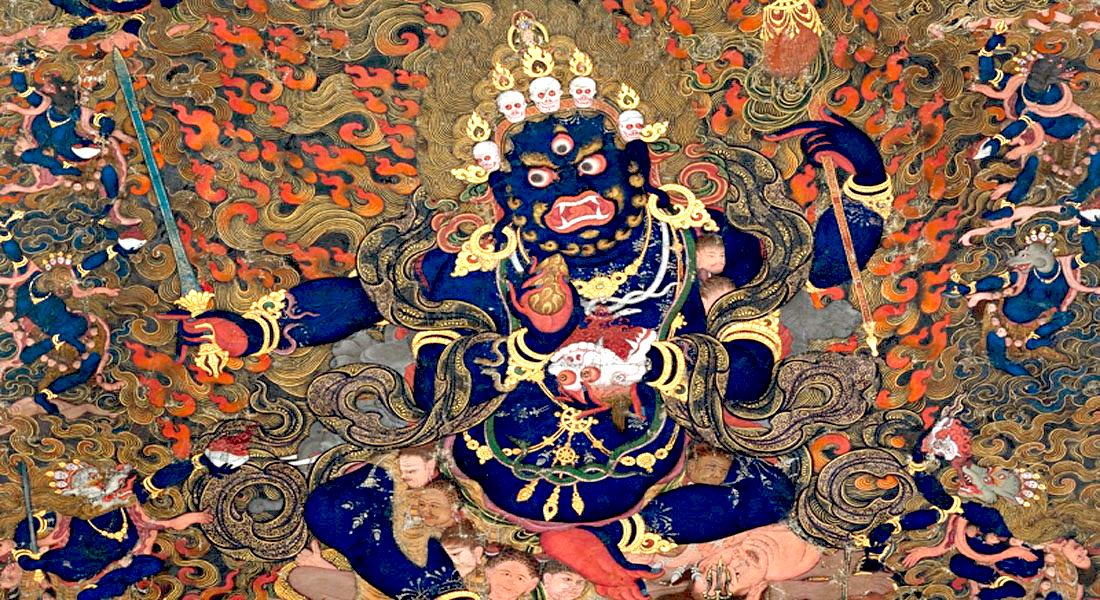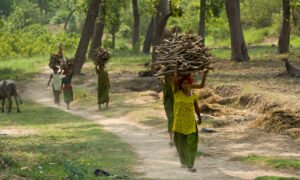The Himalayan region, with its towering peaks and deep valleys, is a land of immense natural beauty and cultural richness. This vast and diverse region, spanning several countries including India, Nepal, Bhutan, and Tibet, has given rise to a wealth of folk tales and legends that reflect the unique traditions, beliefs, and values of its people. These stories, passed down through generations, are imbued with the mysticism and spirituality that characterize the Himalayas, and they offer a fascinating glimpse into the world of Himalayan folklore.
The Origins of Himalayan Folk Tales
The origins of Himalayan folk tales can be traced back to ancient times when the inhabitants of this region relied on oral traditions to preserve their history, beliefs, and moral values. These stories were often told around communal fires, in village squares, or during festivals, serving not only as entertainment but also as a means of imparting wisdom and cultural identity.
Oral Tradition and Storytelling
Oral tradition has been the primary means of preserving and transmitting folk tales in the Himalayas. This method of storytelling is characterized by its fluidity and adaptability. Unlike written texts, oral tales can evolve with each retelling, incorporating new elements and adapting to the changing cultural and social context. This dynamic nature of oral tradition ensures that the stories remain relevant and resonate with successive generations.
Storytelling sessions often took place in communal settings, such as during long winter nights when villagers gathered around the hearth to keep warm. Elders, who were considered the custodians of the community’s knowledge and wisdom, would narrate these tales, captivating their audience with vivid descriptions and dramatic expressions. The interactive nature of oral storytelling, with listeners sometimes interjecting or adding their interpretations, further enriched the narratives and fostered a sense of communal identity.
The Influence of Religion and Spirituality
Religion and spirituality have significantly influenced the folk tales of the Himalayas. The region is home to a diverse array of religious traditions, including Hinduism, Buddhism, Bon, and animistic practices. Each of these belief systems has left its imprint on the local folklore, infusing the tales with spiritual symbolism and moral lessons.
Hinduism, for instance, has contributed numerous deities and mythological themes to Himalayan folk tales. Stories of gods and goddesses, such as Shiva, Parvati, and Vishnu, are common in the folklore of northern India and Nepal. These tales often highlight the divine intervention in human affairs and underscore the importance of devotion and righteousness.
Buddhism, particularly influential in regions like Tibet, Bhutan, and parts of Nepal, has also shaped the local folklore. Buddhist themes of compassion, karma, and the pursuit of enlightenment are prevalent in many stories. The figure of the Buddha, as well as various Bodhisattvas and saints, frequently appears in these narratives, offering guidance and imparting moral lessons.
Animistic beliefs, which view natural elements such as mountains, rivers, and forests as inhabited by spirits, are deeply embedded in the folklore of the Himalayas. These tales often feature interactions between humans and nature spirits, emphasizing the need for harmony and respect for the natural world. The belief in protective deities and guardian spirits, who watch over villages and sacred sites, is a recurring motif in many folk tales.
Common Themes in Himalayan Folk Tales
The Supernatural and the Divine
One of the most prevalent themes in Himalayan folk tales is the presence of supernatural beings and divine intervention. The Himalayas are often referred to as the abode of gods, and many stories revolve around the interactions between humans and deities. These tales often emphasize the power and benevolence of the gods, as well as the importance of piety and devotion.
For example, in the folk tales of Uttarakhand, a state in northern India, the local deity Nanda Devi is revered as the protector of the region. Stories about Nanda Devi often highlight her role in safeguarding the people and the land, and they emphasize the need for maintaining harmony with nature. Similarly, in Tibetan folklore, the mountain deity Machapuchare is believed to reside in the sacred peak of the same name. Tales of Machapuchare often depict the deity’s wrath towards those who desecrate the mountain and the blessings bestowed upon the devout.
Moral Lessons and Ethical Values
Himalayan folk tales often carry moral lessons and ethical values, reflecting the societal norms and cultural principles of the region. These stories frequently feature characters who face trials and tribulations, and their actions and choices serve as examples of virtue or vice. Through these narratives, important values such as honesty, bravery, kindness, and respect for nature are conveyed.
In the folk tales of Himachal Pradesh, another northern Indian state, the character of Bholu, a simple and honest shepherd, is a recurring figure. Bholu’s adventures and misadventures often illustrate the virtues of simplicity, integrity, and humility. In one popular story, Bholu’s honesty leads him to discover a hidden treasure, which he uses to benefit his community. Such tales not only entertain but also reinforce the cultural values that are cherished by the people of the region.
The Interplay Between Humans and Nature
The relationship between humans and nature is a central theme in many Himalayan folk tales. The rugged terrain and harsh climatic conditions of the Himalayas have shaped the lives and livelihoods of its inhabitants, and this close connection with nature is reflected in their folklore. Many stories depict the natural world as both a source of sustenance and a force to be reckoned with, highlighting the need for coexistence and respect.
In the folk tales of Nepal, the figure of the Yeti, or the Abominable Snowman, is a prominent example of this theme. The Yeti is often portrayed as a guardian of the mountains, and encounters with this mythical creature are said to be both awe-inspiring and terrifying. These stories convey the idea that the mountains are alive and imbued with a spirit that demands respect and reverence. Similarly, in Bhutanese folklore, the Thunder Dragon Druk is a symbol of the natural forces that shape the country’s landscape and weather. Tales of the Thunder Dragon emphasize the importance of living in harmony with nature and respecting its power.
Notable Himalayan Folk Tales and Legends
The Legend of Nanda Devi
Nanda Devi, the revered goddess of the Himalayas, is a central figure in the folklore of Uttarakhand. According to legend, Nanda Devi was a princess who chose to renounce her royal life and devote herself to spiritual pursuits. She retreated to the mountains, where she attained divine status and became the protector of the region.
One popular tale tells of a time when the kingdom of Kumaon was plagued by drought and famine. The people prayed to Nanda Devi for help, and in response, she appeared in the form of a beautiful woman. She instructed the villagers to perform certain rituals and offerings, which they did with great devotion. Soon after, the rains returned, and the land was restored to fertility. This story highlights the goddess’s benevolence and her role as the guardian of the land and its people.
The Nanda Devi Raj Jat Yatra, a pilgrimage and festival held in Uttarakhand, is a living testament to the enduring reverence for the goddess. This event, which takes place every 12 years, involves a long and arduous journey to the Nanda Devi temple, located high in the mountains. Pilgrims carry a four-horned sheep, believed to be a manifestation of Nanda Devi, and offer prayers and sacrifices along the way. The festival is a blend of religious devotion, cultural celebration, and communal bonding, reflecting the deep-rooted significance of the legend in the local culture.
The Tale of Machapuchare
In Tibetan and Nepali folklore, Machapuchare, also known as the “Fish Tail” mountain, is considered sacred and is believed to be the home of the god Shiva. The mountain’s distinctive shape, resembling a fish’s tail, is said to be a divine manifestation, and climbing its peak is strictly forbidden.
One well-known legend tells of a group of climbers who attempted to summit Machapuchare, despite the warnings of the local villagers. As they ascended, they encountered a series of strange and ominous events, including severe weather and mysterious apparitions. Realizing that they had angered the mountain deity, the climbers decided to turn back. Upon their return, they found that the village had been blessed with abundant harvests and prosperity, a sign of the deity’s forgiveness. This story underscores the sacredness of the mountain and the importance of respecting divine boundaries.
The prohibition against climbing Machapuchare is not merely a cultural taboo but also a reflection of the profound spiritual connection the locals have with the mountain. The peak is seen as a tangible link between the earthly realm and the divine, and its untouched summit is a symbol of purity and sanctity. This reverence is mirrored in the annual festivals and rituals dedicated to Shiva, where the mountain is venerated through songs, dances, and offerings.
The Story of Bholu the Shepherd
Bholu the Shepherd is a beloved character in the folk tales of Himachal Pradesh. Known for his simplicity and honesty, Bholu often finds himself in situations that test his character and resourcefulness.
In one famous tale, Bholu comes across a talking bird while tending his flock. The bird, which is actually a cursed prince, asks for Bholu’s help in breaking the curse. Bholu agrees and follows the bird’s instructions, which involve performing a series of good deeds and acts of kindness. In the end, the curse is lifted, and the prince rewards Bholu with a bag of gold. However, Bholu, true to his humble nature, uses the gold to build a school and a hospital for his village, earning the admiration and respect of his community. This story illustrates the virtues of compassion and selflessness, as well as the rewards of doing good.
Bholu’s tales often reflect the pastoral lifestyle of Himachal Pradesh’s rural communities. The shepherd’s simple existence, close to nature and governed by the cycles of the seasons, is a backdrop for narratives that emphasize the value of modesty and hard work. In another tale, Bholu helps a family of wild animals, who in turn save him from a snowstorm, highlighting the reciprocal relationship between humans and the natural world.
The Legend of the Thunder Dragon Druk
In Bhutanese folklore, the Thunder Dragon Druk is a powerful and revered figure. The dragon is believed to control the weather and is often associated with thunder and lightning. According to legend, the Druk can be seen flying among the clouds during storms, and its roar is said to shake the mountains.
One popular tale tells of a young boy named Jigme who encounters the Druk while wandering in the mountains. The dragon, impressed by Jigme’s bravery and purity of heart, grants him the ability to understand the language of animals. With this gift, Jigme is able to help his village by predicting weather changes and warning of natural disasters. The story of Jigme and the Thunder Dragon emphasizes the themes of bravery, purity, and the harmonious relationship between humans and nature.
The Thunder Dragon is a central symbol in Bhutanese culture, also featured prominently on the national flag. It represents the sovereignty of the nation and the protection of its people. Festivals such as the Druk Wangyel Festival, held at the Dochula Pass, celebrate this mythical creature with elaborate dances and rituals. These celebrations reinforce the cultural heritage and spiritual beliefs of Bhutan, drawing connections between the natural world and the divine.
The Legend of Milarepa
Milarepa, one of Tibet’s most famous yogis and poets, is a significant figure in Tibetan folklore. His life story, filled with themes of redemption, spiritual growth, and enlightenment, has inspired countless tales and songs.
Born into a prosperous family, Milarepa’s early life was marred by tragedy and revenge. After his father’s death, his uncle and aunt seized the family’s wealth, leading Milarepa to learn black magic to exact revenge. He caused great harm, but consumed by guilt and seeking redemption, he turned to Buddhism. Under the guidance of the great master Marpa, Milarepa underwent severe trials and penances to purify his karma.
One of the most famous stories tells of Milarepa’s solitary retreat in the caves of the Himalayas, where he meditated for years, enduring extreme hardships and living on nettles. His dedication and perseverance led him to attain enlightenment. Milarepa’s songs, known as “Mila’s songs,” are expressions of his spiritual insights and teachings, blending poetic beauty with profound wisdom.
Milarepa’s life story is not just a spiritual narrative but also a reflection of the Tibetan cultural ethos. His transformation from a vengeful youth to a revered saint underscores the values of forgiveness, perseverance, and the transformative power of spiritual practice. Pilgrims still visit the caves where Milarepa meditated, and his legacy continues to inspire Tibetan Buddhists.
The Legend of Guru Rinpoche (Padmasambhava)
Guru Rinpoche, also known as Padmasambhava, is another pivotal figure in Himalayan folklore, especially in Tibet, Bhutan, and the Himalayan regions of India. Revered as the second Buddha, Guru Rinpoche is credited with bringing Buddhism to Tibet and subduing the local spirits and demons that opposed its spread.
One of the most famous legends of Guru Rinpoche is his miraculous birth. It is said that he was born from a lotus flower in the middle of a lake, already in the form of an eight-year-old child, radiating a golden aura. This miraculous birth symbolizes his divine nature and his destined role as a great teacher and protector.
Another popular tale recounts Guru Rinpoche’s journey to Tibet at the invitation of King Trisong Detsen. Facing fierce opposition from local deities and spirits, Guru Rinpoche used his supernatural powers to subdue these forces, transforming them into protectors of Buddhism. His journey is marked by numerous miraculous events, such as flying on the back of a tiger and performing incredible feats of magic and wisdom.
Guru Rinpoche’s influence is still felt strongly in the Himalayan region. Monasteries, temples, and festivals dedicated to him abound, and his teachings form a cornerstone of Tibetan Buddhism. The annual Tsechu festival in Bhutan, featuring masked dances and rituals, celebrates his contributions and keeps his stories alive in the cultural consciousness.
Himalayan folk tales and legends are a testament to the rich cultural heritage of the region. These stories, with their vivid characters, moral lessons, and deep connection to the natural world, offer a unique window into the beliefs and values of the Himalayan people. As these tales continue to be passed down through generations, they not only preserve the cultural identity of the region but also inspire and educate, reminding us of the timeless wisdom and beauty of Himalayan folklore.
The diversity and depth of these narratives highlight the interplay between human experience, spirituality, and the natural environment. Whether through the divine interventions of deities like Nanda Devi and Machapuchare, the moral lessons embodied by characters like Bholu the Shepherd, or the profound spiritual journeys of figures like Milarepa and Guru Rinpoche, Himalayan folk tales encapsulate a unique cultural legacy that continues to captivate and enlighten. These stories not only provide entertainment but also serve as a guiding force, helping to navigate the complexities of life with wisdom and grace.





